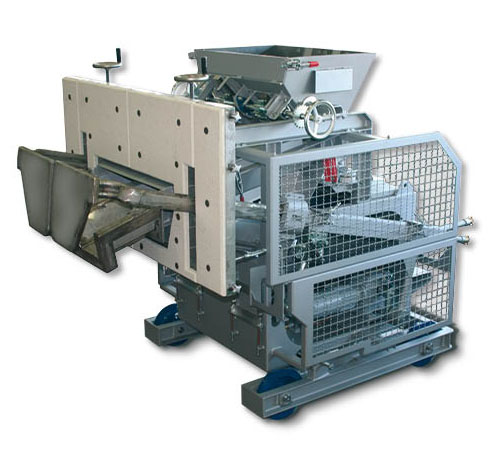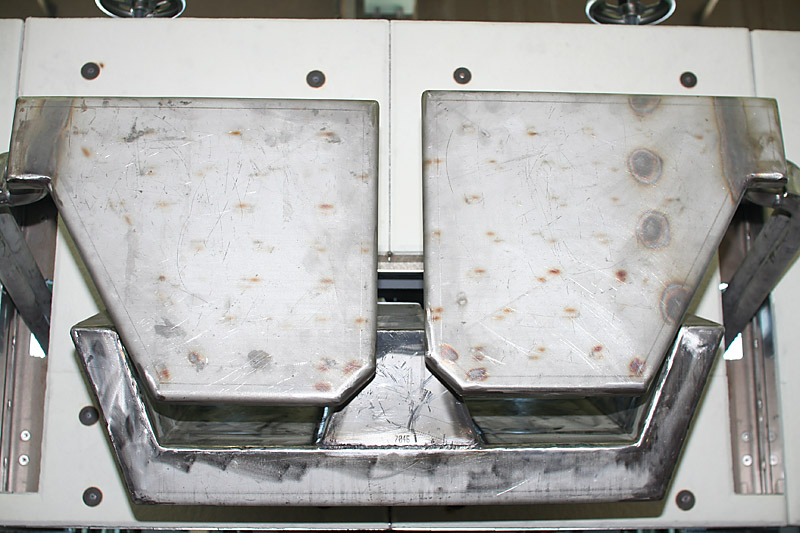- Home
-
Service
- Hot End

FEATURES
Durability due to stable construction, utilization of high quality components and excellent workmanship
The elimination of the rotary motion allows better sealing of the doghouse and thereby less excess air from outside into the furnace
Temperature rises in the doghouse enabling to use preheated and non-preheated batch due to lower batch carry-over
NOx emission is reduced
Furnace energy consumption decreases
Influencing the batch by way of the asynchronous adjustable pushers
Reduced wear and tear due to fewer mechanical parts
Fast paddle change within 20 minutes
contact us

DESCRIPTION

The HORN vibratory batch charger HVR 700F-2P is a solid and long reliable charger for preheated and non-preheated batch into side or end fired furnaces. The charger can be used therefore at regenerative, recuperative or oxy-fuel furnaces with lateral or frontal, open doghouse.
The principle of operation is to feed the batch via a lengthwise separated vibratory chute into the doghouse and push it via two water cooled paddles onto the glass surface into the furnace. The end piece of the vibrating chute, which is made of heat resistant steel, is water cooled and is exchangeable.
The paddles push the batch evenly from the vibrating chute into the glass melting end and create batch piles. Thus increase the melting of the batch. The two water-cooled pushers can be operated in three modes. The pushers can work absolute synchronised or synchronised but 180° shifted or independent. The speed of each pusher is inverter-controlled. The stroke length and the submersion depth of each pusher can be adjusted manually.
Compared to the other HVR type chargers the HVR 700F-2P charger is mounted on a rigid construction without rotation to distribute the batch inside the tank. The batch distribution inside the tank is executed by the two individual adjustable pusher paddles.
This rigid construction allows better sealing of the doghouse by a refractory lined metal hood and a straight heat-shield at the charger front. The construction reduces the heat loss at the doghouse and increases the temperature inside. This already causes pre-glazing of the batch inside the doghouse, which allows the use of preheated and non-preheated batch due to the reduced batch dusting.
The better sealed doghouse eliminates secondary air supply and reduces energy consumption. The heat shield also protects the batch charger from too much heat radiation by reinforced insulation.
- Hot End


 Scan
Scan  716-722 Golden Land Building, 32 Liang Ma Qiao Road, Chaoyang District, Beijing
716-722 Golden Land Building, 32 Liang Ma Qiao Road, Chaoyang District, Beijing +86(10)6463 7797
+86(10)6463 7797 swan.si@cgeglass.com.cn
swan.si@cgeglass.com.cn